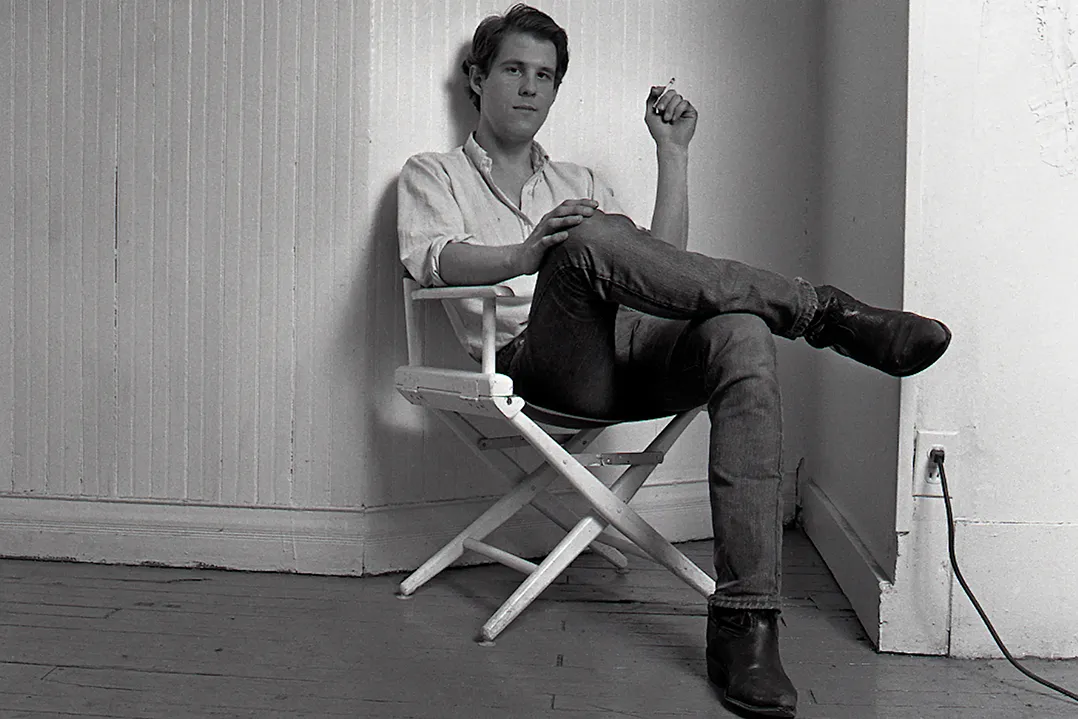During a segment of the indie documentary film “Make Me Famous,” consecutive interview subjects question the need for a movie about 1980s East Village artist Edward Brezinski, who was well-known inside the New York City art scene but not outside it.
New York-based husband-and-wife filmmakers Brian Vincent (director) and Heather Spore (producer), whose documentary was more than a decade in the making, welcome that sort of scrutiny. Whether the late Brezinski, who chased elusive fame and fortune while others – most notably Jean-Michel Basquiat and Keith Haring — in the East Village scene basked in it, is worthy of the documentary treatment should be up to the audience to decide, the filmmakers said.
“It’s not a movie to say he absolutely deserved this, but I think he does,” Vincent said during a Q&A after the film’s Indianapolis debut May 17 at the Kan-Kan Cinema and Restaurant on the city’s near eastside.
“Make Me Famous,” distributed and promoted by Vincent and Spore, has been playing in theaters for more than a year. Another Indianapolis showing is planned, Spore said.
The filmmakers received mixed reactions when they approached those who had lived the East Village scene during the ’80s. Some of the artists who had worked and partied alongside Brezinski thought the filmmakers were joking about him being the main subject of their film. But many of those same artists were pleased that Brezinski and his paintings were being taken seriously and were eager to talk about him and the East Village scene, seen as a sort of bohemian alternative to the elite New York City art scene.

“He’s very mercurial,” Spore said. “Everybody had an opinion.”
Those opinions, ranging from Brezinski being an artistic genius and a fearless painter to being angry, broken and bumbling, form the core of “Make Me Famous,” as the filmmakers include interviews with myriad artists and gallerists (and Brezinski’s estranged family members) and weave them together with homemade videos of Brezinski, images of his work and a score that sounds perfectly period specific.
The result is an immersive film that puts the viewer squarely in Brezinski’s time and place, and one that is both informative and fun. And, despite the scrutiny, the filmmakers make a convincing case that Brezinski, though he is mostly infamous for having eaten a chemically treated doughnut that was part of another artist’s gallery exhibition, lived a life worthy of examination and remembrance.
Brezinski was born in 1954 in Michigan and studied art in San Francisco before moving to New York while in his 20s. A neo-expressionist painter who specialized in portraits, he was a perfectionist. His subjects recall sitting for Brezinski’s paintings and having him start over multiple times, sometimes never letting his subjects see what he had done during any part of the process.
Brezinski also was an eager self-promoter. He opened the Magic Gallery in his rundown apartment (one that was across the street from a men’s shelter) and hosted parties and exhibitions there. He frequently handed out flyers for his shows during openings at other galleries, seen as a no-no in the art community. He had, as one interview subject in the documentary said, a “mania to be noticed.”
But his work never drew the kind of notice he got for eating a doughnut. Likely in a state of intoxication (Brezinski’s drinking is well-documented in the film), he entered the Paula Cooper Gallery in New York City in October 1989 and in what was either an act of disdain for the work of Robert Gober and the acclaim it had earned or a drunken mistake, he ate a doughnut that was part of Gober’s work. The doughnut had been treated with toxic chemicals for the display. Brezinski was rushed to a hospital but survived, and in typical fashion, he contacted a newspaper to make sure word got out about what he had done.
“Make Me Famous” includes a couple of segments about Brezinski’s doughnut antics, including when the filmmakers attended a recent Q&A session with Gober and questioned him about the story, one he had been reluctant to discuss.
While the doughnut incident is Brezinski’s closest brush with fame, the hook of “Make Me Famous” is this: Did Brezinski fake his death? He had moved to Germany in the 1990s and then France, where it was reported that he died in 2007. But given how he lived and that details in a brief obituary seemed suspect, the filmmakers and some of Brezinski’s cohorts float the idea that Brezinski didn’t really die in 2007. Brezinski’s artist friends Marguerite Van Cook and James Romberger accompanied Vincent and Spore to France to unravel the mystery. Their findings are best left unrevealed until “Make Me Famous” is viewed.
The documentary noticeably shifts narrative gears when it turns to Brezinski’s reported death, making “Make Me Famous” feel like two movies in one. The film is comprehensive, covering in detail the artist’s life. The story sometimes wanders, but that only serves to put Brezinski in fuller context. The filmmaking couple’s passion for the project (their research started in 2012, and they began filming in 2015) is apparent in the finished project. And though there is much information for the viewer to absorb, the film never feels dry. The interviews and imagery move at a quick pace, giving the documentary a lively feel.
One wonders what Brezinski might think about his life being given the documentary treatment. “Make Me Famous” might not make him famous. But it serves as a fitting tribute to an enigmatic artist who desperately wanted to be known.
For information on future theater showings of “Make Me Famous” and upcoming information about streaming availability, visit makemefamousmovie.com.




